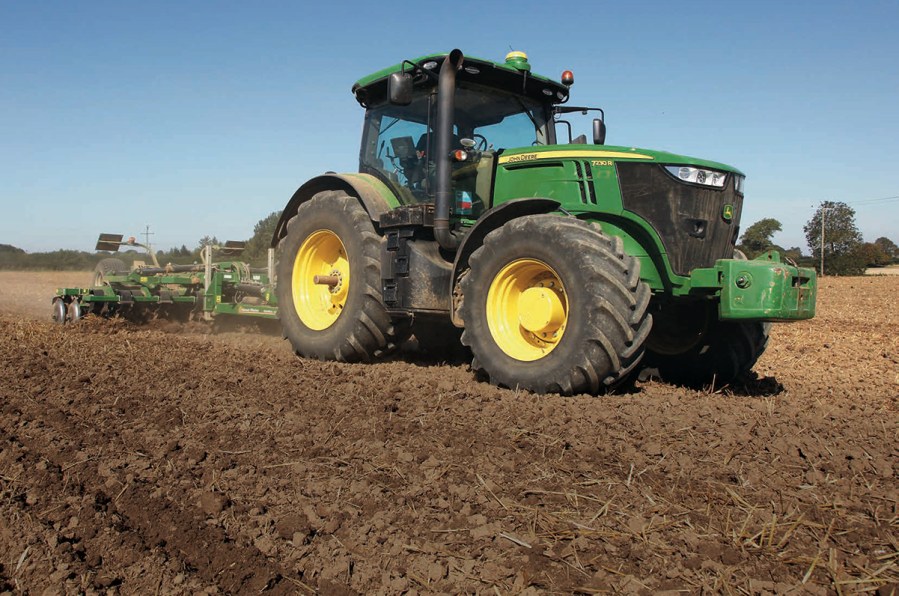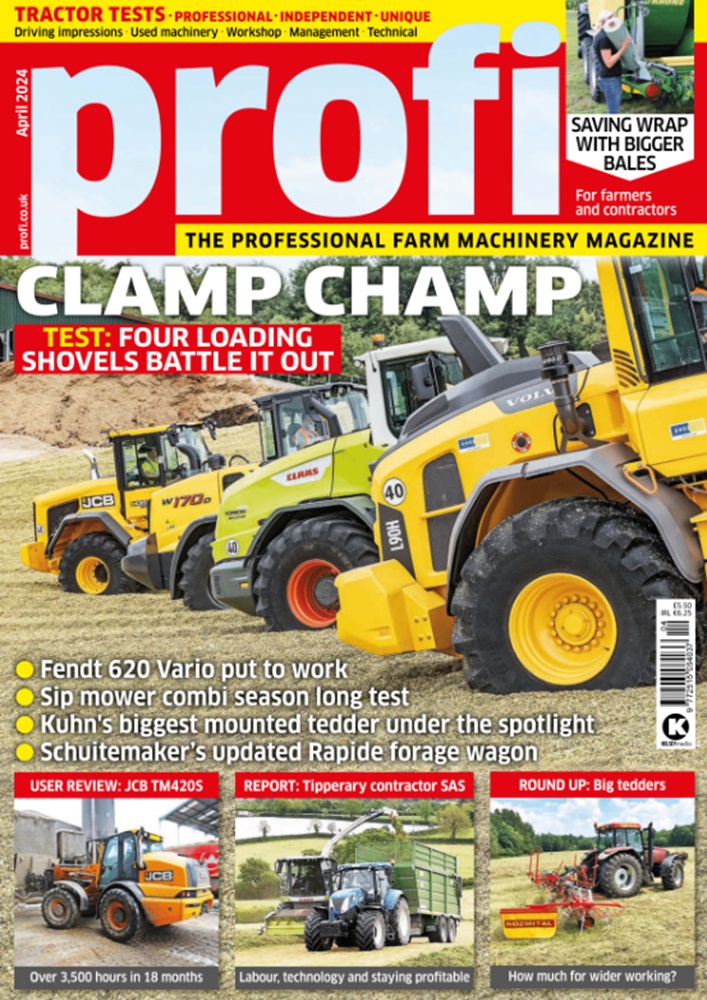For a mid-sized mixed farm, high horsepower can’t always be justified, and its primary workhorse needs to be nimble enough to perform a range of tasks. profi catches up with an operator whose John Deere 7230R has been a relatively problem-free hit since its arrival as the farm’s all-rounder back in 2015
The 7R series first graced UK shores in 2011, replacing the outgoing 7030 series with five models to offer buyers between 230hp and 310hp from a 9.0-litre, six-cylinder engine. There was a definite European influence in the design, as we discovered with our tractor test on a 7280R in the 06/2012 issue. But the first generation was also plagued with problems: check out our guide to buying a used model in the 11/2016 magazine.
A revamp in 2014 saw the flagship 7310R model released, while at the other end of the range the smaller 7210R and 7230R had their 9.0-litre six-pot engine replaced with a more compact 6.8-litre unit. But the second generation makeover didn’t just stop with the motor: there were also upgrades to the cab and the introduction of the firm’s E23 powershift transmission, which aimed to provide operators with CVT driveability through a 100% mechanical driveline.
Aimed at large-scale arable farmers and contractors, the average shipping weight of a 7R is 11t, so Deere says it’s still light enough for transport work but can be ballasted up to 16t for heavy cultivation work if necessary. This all-round capability made it an ideal fit for this month’s anonymous reviewer, whose employer took delivery of a brand new 7230R back in 2015 to carry out just about every job you can think of on a modern mid-sized mixed farm.
Four years and 2,860 hours later, we caught up with him during the busy cultivation period — as he was kicking up dust with a 4.6m Great Plains CultiPress — to find out how the tractor has performed.
For more up-to-date farming news and reviews click here and subscribe now to profi for just £3.99 an issue.






